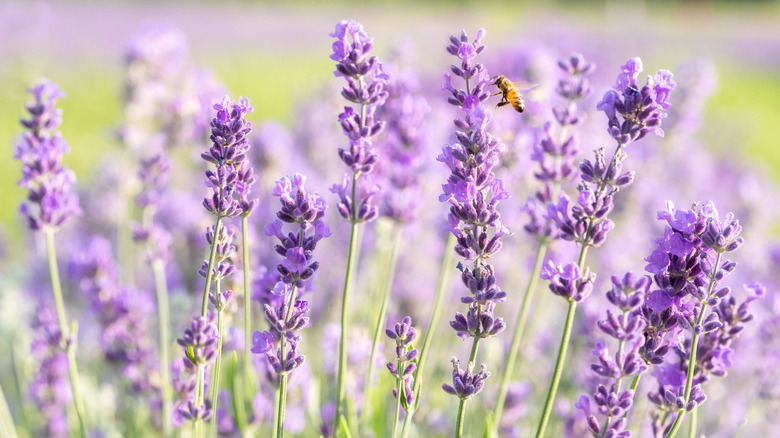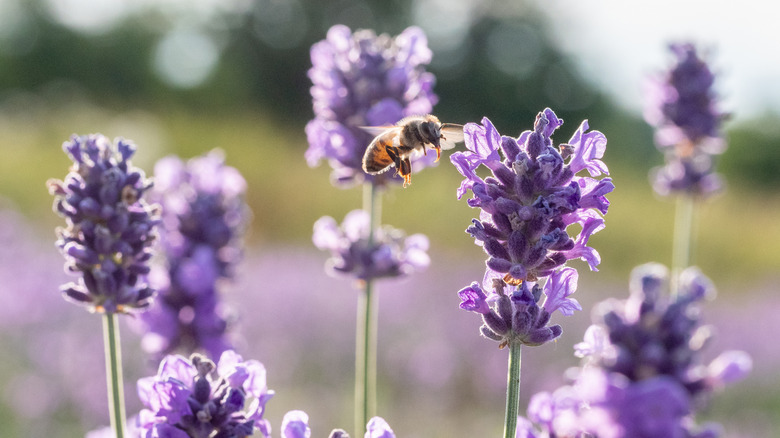Why Garden Lavender And Myoporum Ground Cover Make A Great Pair
When growing different plants in your yard as companions, you'll find that some combinations are outstanding as a visual delight to your senses. Their pairings complement each other beautifully and make you smile every time you admire them. That's why garden lavender (Lavandula angustifolia) and pink ground cover Myoporum (Myoporum parvifolium 'Pink') make such a great pair. The blend of colors, with lavender's gray foliage and purple flowers and Myoporum's bright green leaves and pink blooms, looks like it was mixed on an artist's palette to create an eye-catching floral painting.
Better yet, these two plants enjoy Mediterranean conditions in the garden. They both love full sun exposure and excellent drainage and are relatively drought tolerant. As a bonus, you'll find that Myoporum ground covers can be a garden savior when it comes to weed control. While the individual varieties of lavender can be grown in USDA hardiness zones 5 through 9, Myoporum does best in zones 9 through 11. So, if you garden anywhere within zone 9, you can certainly try this superb combination for a beautiful color focus in your yard. However, if you're in a different climatic region, don't worry — there are plenty of other beautiful plants that pair nicely with lavender.
Shared cultural requirements of lavender and Myoporum 'Pink'
Since lavender and Myoporum 'Pink' are both sun lovers, choose a garden bed that receives plenty of sunlight throughout the day to plant these two together. Make sure the soil is free-draining, because soggy soil will spell the demise of your plants. Myoporum is a succulent, so it only needs watering when the soil has dried out. Similarly, lavender won't tolerate wet feet, as excessive moisture can cause root rot and kill your plant.
Since this species combination is fairly low-maintenance, the only thing you might have to do is give your plants an occasional prune to keep their foliage bushy and lush. Myoporum 'Pink' benefits from some trimming to promote denser growth, while lavender will look better if it's lightly pruned, especially in spring, once frost no longer presents a risk. This trimming should stop the plant from becoming too woody. While the colors of the foliage of both varieties blend beautifully, your visual senses will be delighted even further when the plants burst into bloom in summer. Plus, you can enjoy the added benefit of these flowers attracting hoards of bees to your garden. As a final note, did you know that you can use the color wheel to plan the perfect plant combinations in your yard? It's certainly something to consider if you're going to create some new flower beds.

